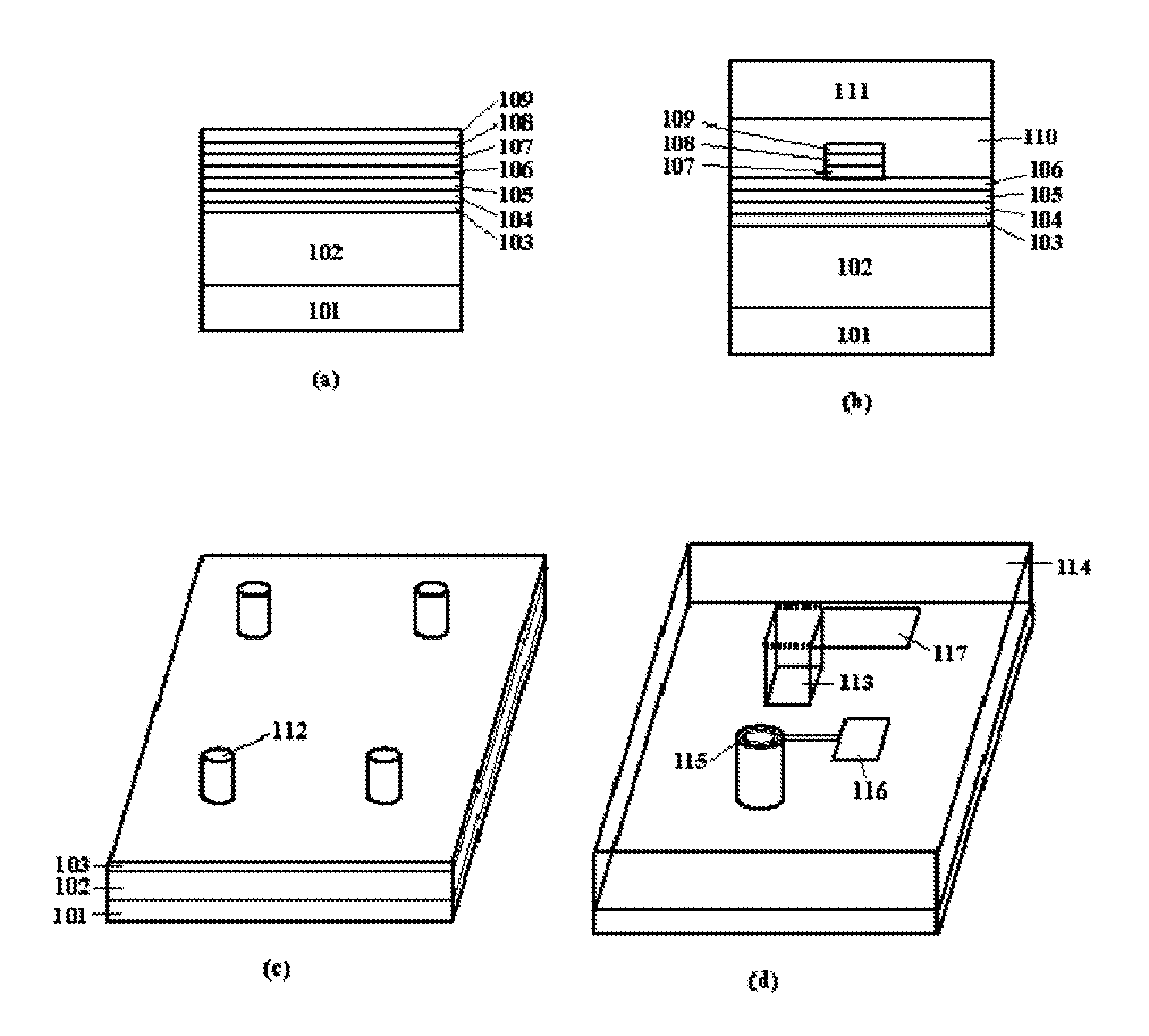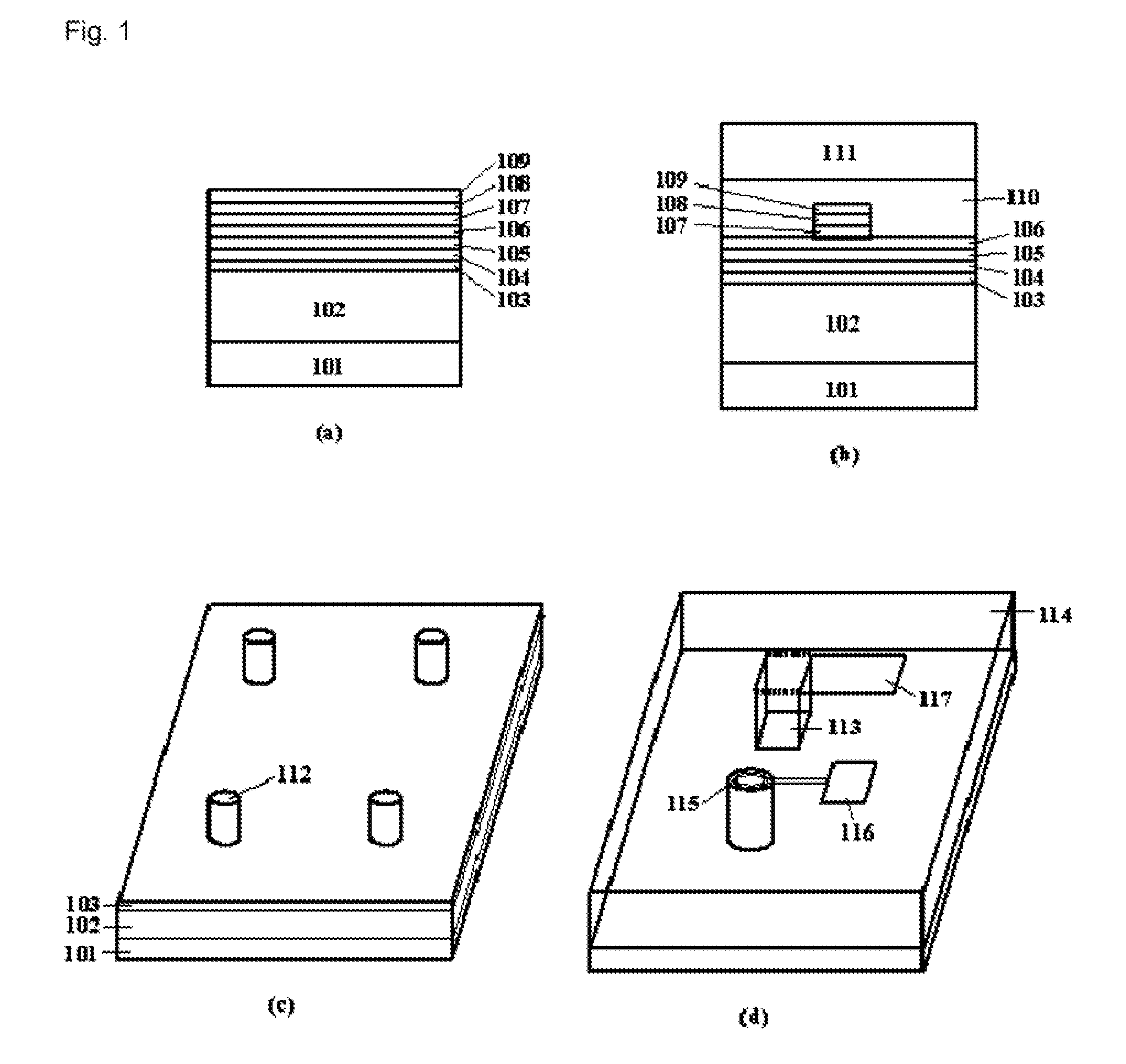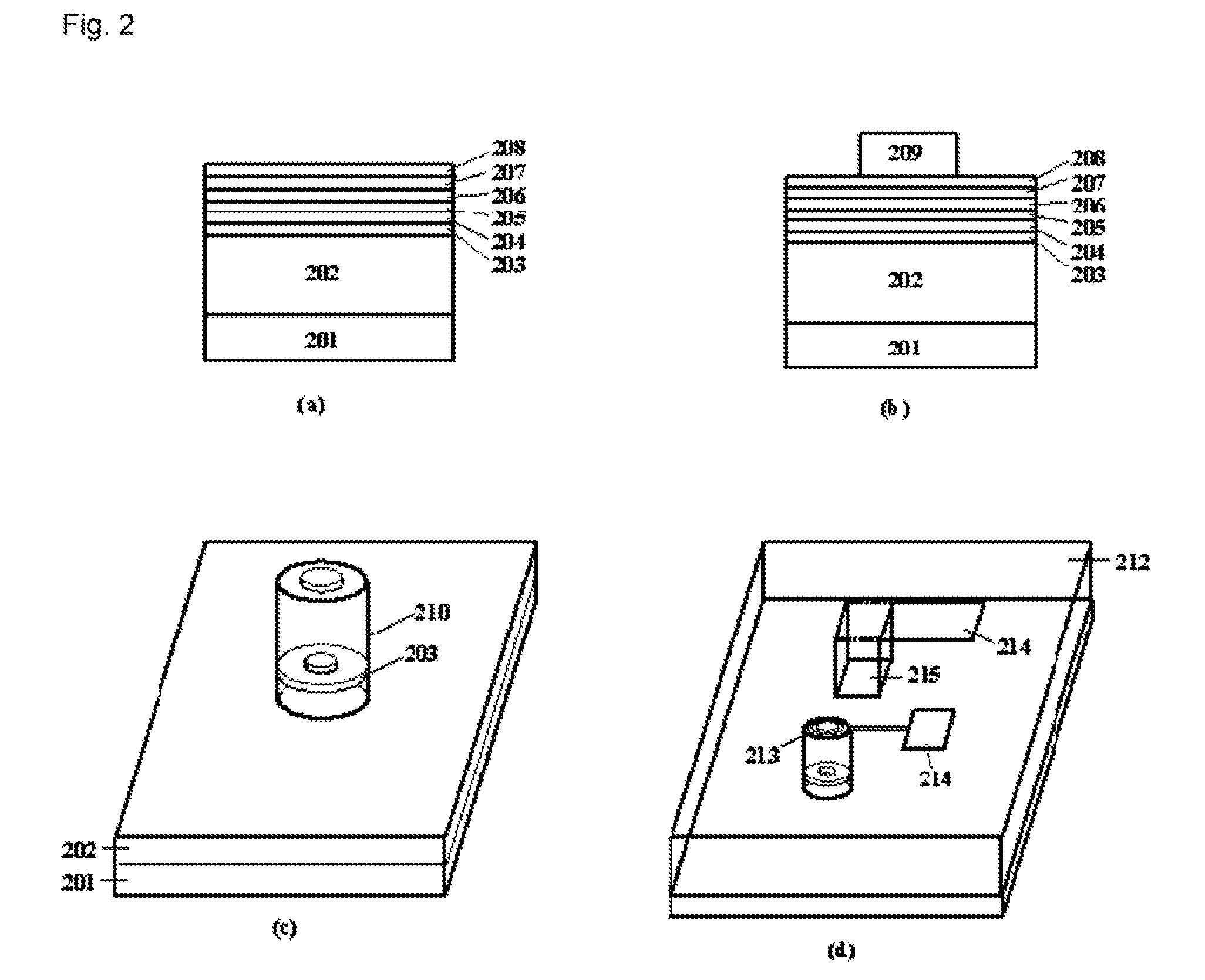Surface-emission type semiconductor laser
a semiconductor laser and surface emission technology, applied in semiconductor lasers, laser details, electrical equipment, etc., can solve the problems of affecting the overall performance of the system, so as to reduce the effective optical path length, shorten the leff, and improve the effect of pulse frequency
- Summary
- Abstract
- Description
- Claims
- Application Information
AI Technical Summary
Benefits of technology
Problems solved by technology
Method used
Image
Examples
first exemplary embodiment
[0194]Hereafter, the structure of the surface-emission type semiconductor laser, device according to a first exemplary embodiment of the present invention will be explained with reference to FIG. 1. This first exemplary embodiment is an example of an application of the present invention to a tunnel-junction type surface-emission laser having a lasing wavelength λ0=1.3 μm, which is formed on a GaAs substrate.
[0195]First, as shown in FIG. 1(a), a first DBR layer 102 which is formed by stacking up plurality of DBRs (n-type semiconductor mirror layer) composed of a pair of an n-type GaAs layer and an n-type AlAs layer as an elementary unit; an n-type GaAs clad layer 103; multiple-quantum-well active layer 104 composed of non-doped GaInNAs well layer and GaAs barrier layer; a p-GaAs clad layer 105; a p-GaAs0.25P0.75 layer 106; a p+-In0.1Ga0.9As layer 107; an n+-Ga0.9In0.1N0.02As0.98 layer 108; and an n-GaAs layer 109 are successively stacked up on an n-type GaAs substrate 101 by a metal-...
second exemplary embodiment
[0214]Hereafter, the structure of a surface-emission type semiconductor laser device according to a second exemplary embodiment of the present invention will be explained with reference to FIG. 2. This second exemplary embodiment is an example of an application of the present invention to a surface-emission type laser of a lasing wavelength λ0=0.85 μm formed on a GaAs substrate.
[0215]First, as shown in FIG. 2(a), a first DBR layer 202 which is formed by stacking up plurality of DBRs (p-type semiconductor mirror layer) composed of a pair of a p-type Al0.12Ga0.85As layer and a p-type Al0.9Ga0.1As as an elementary unit; a layer for forming an oxidized current-confining-part 203 of p-type Al0.98Ga0.02As; a p-type Al0.3Ga0.7As clad layer 204; multilayer quantum well active layer 205 composed of a non-doped GaAs well layer and an Al0.12Ga0.8As barrier layer; an n-type Al0.3Ga0.7As clad layer 206; an n-type Al0.12Ga0.85As layer 207; and a thin n-type GaAs layer 208 are successively stacked...
third exemplary embodiment
[0234]Hereafter, the structure of a surface-emission type semiconductor laser device according to a third exemplary embodiment of the present invention will be explained with reference to FIG. 3. This third exemplary embodiment is an example of an application of the present invention to a tunnel-junction-type surface-emission laser of a lasing wavelength λ0=1.0 μm formed on a GaAs substrate.
[0235]First, as shown in FIG. 3(a), a first DBR layer 302 which is formed by stacking up plurality of DBRs (n-type semiconductor mirror layer) composed of a pair of an n-type GaAs layer and an n-type Al0.9Ga0.1As layer as an elementary unit; an n-type GaAs clad layer 303; a multiple-quantum-well active layers 304 composed of a non-doped InGaAs well layer and a GaAs barrier layer; a p-GaAs clad layer 305; a p-Al0.3Ga0.7As layer 306; a p+-GaAs0.94Sb0.06 layer 307; an n+-In0.12Ga0.88As layer 308; and an n-GaAs layer 309 are successively stacked up on a n-type GaAs substrate 301 by a metal-organic ch...
PUM
 Login to View More
Login to View More Abstract
Description
Claims
Application Information
 Login to View More
Login to View More - R&D
- Intellectual Property
- Life Sciences
- Materials
- Tech Scout
- Unparalleled Data Quality
- Higher Quality Content
- 60% Fewer Hallucinations
Browse by: Latest US Patents, China's latest patents, Technical Efficacy Thesaurus, Application Domain, Technology Topic, Popular Technical Reports.
© 2025 PatSnap. All rights reserved.Legal|Privacy policy|Modern Slavery Act Transparency Statement|Sitemap|About US| Contact US: help@patsnap.com



